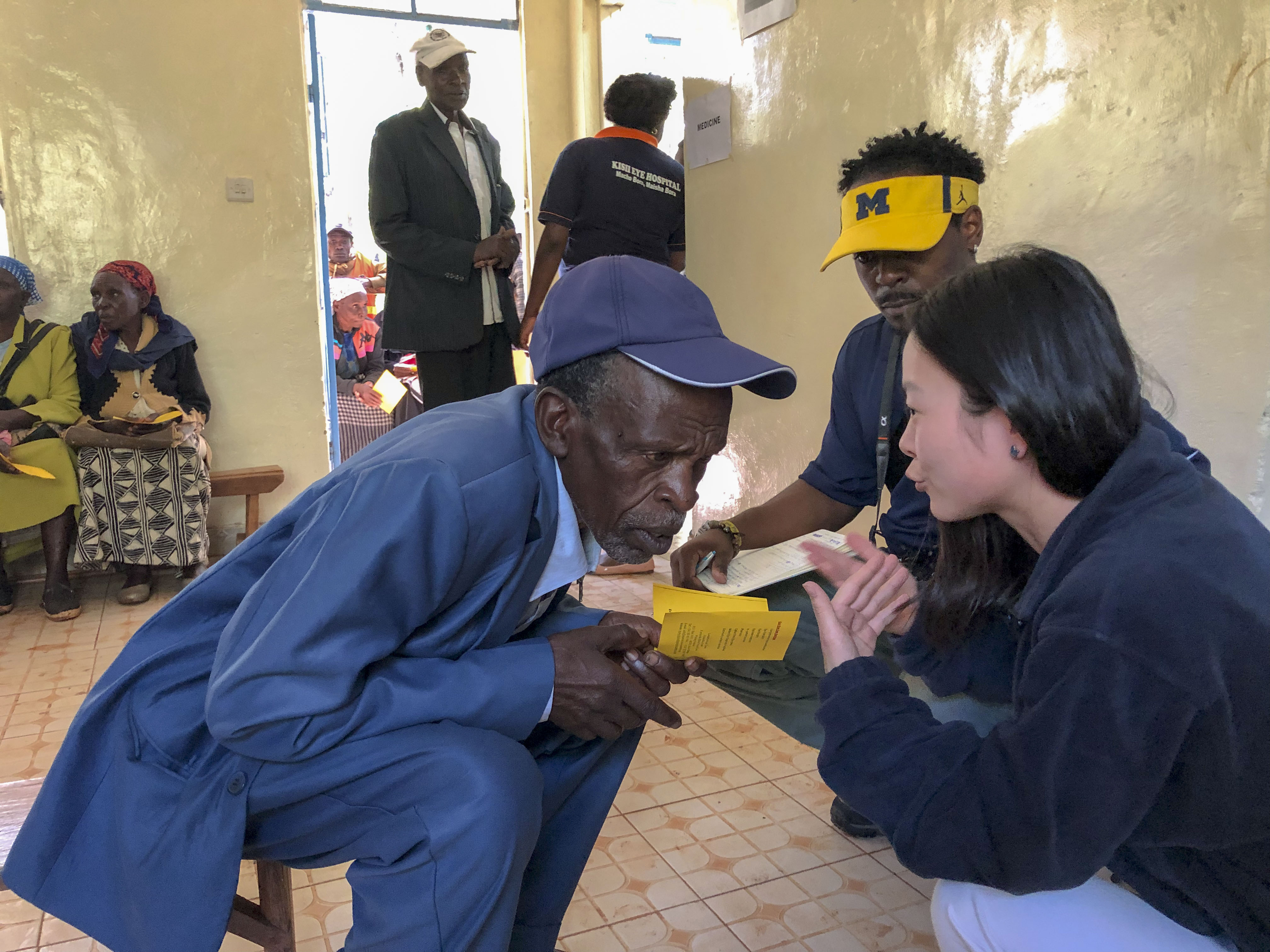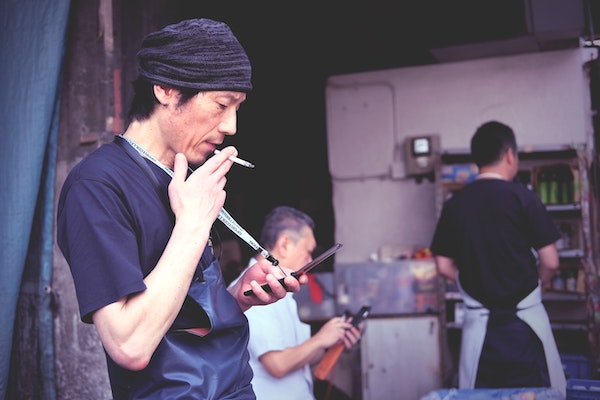With a growing middle class, early-stage frontier markets, enormous demographic advantages, and its ongoing digital transformation, Africa continues to grow in both economic and geopolitical importance. In “Demystifying Africa’s Risk Perception Premium,” Paul Clyde and co-authors make the case for a stronger U.S.- Africa trade and investment relationship, one that changes the narrative around doing business on the continent.
Building on frameworks developed in other markets, we continued working on the market analysis for a new technology to produce ammonia for fertilizer in a small-scale, distributed way using renewable energy. We have also been assisting the researchers in developing a new company that will take the product to market.
TIP has been expanding its EHeza product, a digital health platform, in Rwanda and has been approached by other countries as well. This project involved a complete cost analysis of the product and the implementation of the product.

An information session for students interested in enrolling in BA685: Healthcare Delivery in Emerging Markets will be held at 5:30 p.m. on Monday, Oct. 28 at the Ross School of Business, Blau Hall Room 1210. The class is offered by Michigan Ross and is organized and primarily funded by WDI.
The class is comprised mostly of second-year MBA students, but is open to all graduate students. It provides students with on-the-ground experience in a foreign country while also contributing to the success of partner health clinics and hospitals. The class also is designed to increase participants’ international leadership capabilities and enhance their awareness of diverse business issues within the current global landscape. It is taught by WDI President Paul Clyde.
The course responds to the increasing need from future employers that managers have international business perspectives to augment their business and management knowledge. During the first part of the term, students learn about healthcare in emerging markets through lectures, guest speakers and case discussions. Students are then divided into five teams and prepared for visits to their selected country, traveling to those destinations in late February and early March.
Last year, student teams worked in Ethiopia, India, Kenya, Peru and Rwanda.

Photo by Erica Leong on Unsplash
Government health ministries in low- and middle-income countries (LMICs) have historically struggled to adequately fund healthcare services for their citizens. But as these countries transition away from donor funding over the next two decades, many will need to find new domestic revenue streams to finance these services. A new WDI white paper explores the impact of raising additional government revenue through increased tax rates on “bads,” such as tobacco, alcohol and sugary drinks.
The paper, “Revenue Estimates from Taxing ‘Bads’ in 16 Low- and Middle-Income Countries,” estimates the additional revenue generated in 2016 had higher excise tax rates been imposed on tobacco, alcohol and sugary drinks and then compares this revenue to select national economic indicators. The analysis included 16 low- and middle-income countries: Côte d’Ivoire, Democratic Republic of the Congo, Ethiopia, Haiti, India, Lao People’s Democratic Republic, Moldova, Myanmar, Niger, Papua New Guinea, Rwanda, Senegal, Sierra Leone, Tajikistan, Tanzania and Togo.

Ben Davis
“The key finding is that increased excise tax rates that result in only a modest increase in retail price can still generate an important amount of additional revenue relative to current health expenditure,” said Ben Davis, a research manager with WDI’s Healthcare sector. Davis wrote the paper with Pascale Leroueil, vice president of WDI’s Healthcare sector, and William Savedoff, senior fellow at the Center for Global Development.
The simulations showed that in 14 of the 16 countries, a tax increasing retail price by 17% could generate additional revenue that is more than 50% of the amount these governments currently spend from their own budgets on healthcare. For 7 of the 16 countries, additional revenue is more than 100% of that amount.
Davis emphasized that the study has limitations. For example, estimates do not account for income and cross-substitution effects (or when consumers switch to cheaper alternatives when a product’s price rises), and they are not adjusted based on historical experience in raising tax revenues.
While the results of the current study are broadly aligned with those recently produced by the Bloomberg Philanthropies’ Task Force on Fiscal Policy for Health, there is a slight difference in methodology. The method used by Davis and his fellow authors allowed them to incorporate several different data sources and calculation methods in the final revenue estimates. Input data were obtained from public databases, journal articles, and LMIC government websites and then used in either a “bottom up” or a “top down” calculation. The “Bottom up” calculation begins with data showing how often individuals consume tobacco, alcohol and sugary drinks while the “top down” calculation begins with the amount of money actually collected by LMIC governments that taxed these products.
Davis said these estimates could act as a starting point for a discussion between global donor organizations and country governments. “A government stakeholder might say, ‘These results are interesting. An increased excise tax on these products might be worth considering. Let’s do a deeper analysis to make sure these numbers reflect reality when we take into account all of the factors that couldn’t be captured in the initial study.’”
“This paper is a small part of a larger conversation about domestic revenue mobilization and healthcare financing in low- and middle-income countries,” Davis said. “It is a building block.”
This white paper is a modest contribution to the existing body of knowledge on potential revenue benefits from taxation of “bads” in low- and middle-income countries (LMICs). We seek to provide orders-of-magnitude responses to the questions, “For 16 LMICs, what amount of additional government revenue could have been generated in 2016 if higher excise tax rates had been imposed on tobacco, alcohol, and sugar-sweetened beverages?”, and “How does this additional government revenue compare to select national economic indicators?”.
Also working with Ruli District Hospital, a value chain and market analysis was conducted to assess the feasibility of developing a locally procured and processed Ready-to-Use Therapeutic Food (RUTF) to address the challenge of severe acute malnutrition amongst children in Rwanda. The work focused on three main components – (1) ingredients feasibility; (2) the RUTF market; (3) operational and production capacity.
Conclusions: Some but not all of the principle ingredients can be procured entirely locally, with other ingredients either readily available to import or feasible locally with time. The market is vast, though incumbent competitors and regulatory requirements make entry challenging. There are important advantages to locally organized procurement and production, including outreach and education with local farmers, better risk-sharing and contractual performance, and overall ease of coordination.
This project is focused on supporting donors and country governments in understanding how much money is spent on each type of HIV-related intervention. While this seems like it should be straightforward, it is not because the both donors and countries use different budget formats, making it very difficult to compare line items between budgets. The long-term objectives of this work are to (a) understand the current costs of HIV-related programs and (b) use this information to advocate for change (increased funding or increased efficiency, depending on the results).
E-Heza is a digital health record developed in Rwanda. The newest modules have been completed and the team has expanded the existing modules to 14 new health centers. TIP is in the process of working on strategy, scale and operations’ needs. This project involved developing criteria for partnerships for market expansion through an analysis of the geographic, political, cultural, and healthcare landscapes in East Africa.
In winter 2019, WDI sponsored 11 Multidisciplinary Action Project (MAP) teams that worked for organizations around the world. Each team was comprised of four MBA students from the University of Michigan’s Ross School of Business.
One team—Lauren Baum, Nadia Kapper, Paul Mancheski, Jason Yu—spent three weeks in Rwanda working for The Ihangane Project (TIP) to develop a business model to grow a ready-to-use therapeutic food that is used to treat severe, acute malnutrition. Through photos and the words of MAP team member Nadia Kapper, here is the story of the work they did in Rwanda, the impact they had and the memories they made.